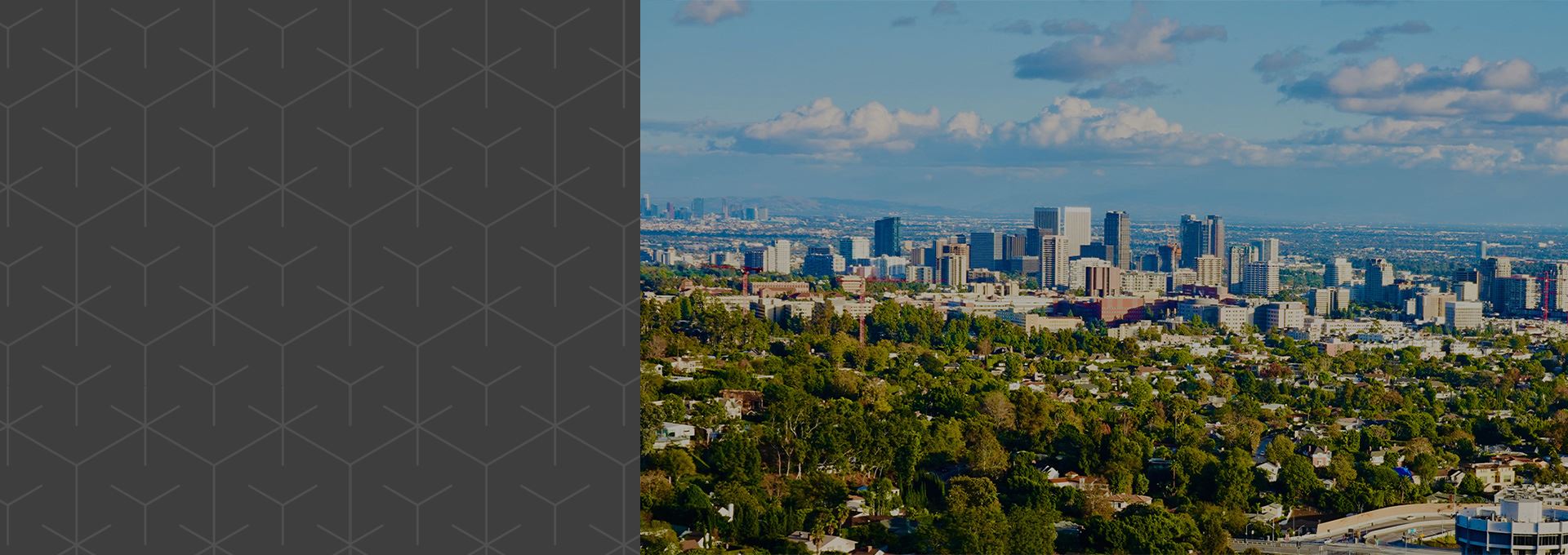
Los Angeles Construction Accident Lawyers
Helping You Seek Justice After Dangerous Construction Accidents and Injuries
Despite strict safety regulations for construction sites – and despite a construction company’s best efforts to keep workers safe – life-threatening construction accidents still occur every year. Lax enforcement and less-conscientious employers can magnify the chance of accidents and their severity. According to the Occupational Safety and Health Administration (OSHA), in one year in the United States, more than 100,000 construction workers suffer injuries, and nearly 1,000 construction workers die on the job.
Our Los Angeles construction accident attorneys at Greene Broillet & Wheeler, LLP, are proud to stand up for the rights of people who suffer from life-altering injuries on the job. We understand the seriousness of workplace injuries, and we see how these injuries derail lives on a regular basis. A sudden work-related injury can damage workers and their families for the rest of their lives, and we fight to better their situation as much as possible by obtaining the full financial recovery they deserve for their losses.
Call our experienced legal team at (866) 634-4525 today to schedule a free consultation. We can travel to a location that is convenient for you.
What Causes Construction Site Injuries?
The Occupational Safety and Health Administration (OSHA) has outlined several hazards present on many construction sites. Many construction site accidents have one of four factors in common. These factors are known as the “fatal four” construction site hazards, since they play a role in so many construction site accidents and fatalities. The “fatal four” construction site hazards include the following:
#1. Falls
According to the Occupational Safety and Health Administration (OSHA), falls are the leading cause of construction site accidents resulting in injury or death.
This is because many construction sites involve working on multi-level job sites, and any worker who is six feet or more above the ground is at risk of serious injury or death.
Although construction site managers are required to provide workers with personal fall arrest equipment, they do not always do so. Additionally, even if managers do provide workers with such equipment, they may not encourage or require workers to use it.
OSHA provides several guidelines for construction site managers to prevent this common construction site accident, including the following:
- Provide and encourage use personal of fall arrest equipment.
- Install and maintain perimeter protection.
- Cover and secure floor openings and label floor opening covers.
- Train workers on how to use ladders and scaffolds safely.
#2. Electrocution
Electrocution is another major hazard that contributes to a significant number of construction site accidents. In fact, according to a National Fire Protection Association (NFPA) report, 77% of the 325 contract worker electrocutions that occurred from 2012-2016 involved workers employed in the construction industry.
Electrocution is prevalent in the construction industry because construction workers often handle exposed wiring in the infrastructure of unfinished buildings. Additionally, exposed power lines, whether they be overhead or underground, pose a high voltage risk to anyone nearby.
Construction site managers should take the following measures to prevent electrocution on the job site:
- Locate and identify utilities before opening the job site to workers.
- Train workers to look for overhead power lines when operating any equipment and maintain a safe distance away from power lines.
- Install ground-fault circuit interrupters for protection.
#3. Struck-By
Construction sites are busy environments with plenty of materials being moved from place to place. These materials are handled by heavy machinery including cranes, trucks, and more. This creates a potentially serious hazard for construction workers as they could be struck by a vehicle or another moving object.
In order to prevent such incidents, construction site managers should take the following measures:
- Train workers to safely maneuver heavy machinery and trucks throughout the site, being aware of workers that are walking or standing on the ground.
- Provide workers with reflective clothing.
- Install warning signs in high danger areas, such as near heavy machinery and in high traffic paths.
#4. Caught In/Between
There are several hazards on a construction site that could cause a caught in/between accident. Heavy machinery with moving parts, for example, has the potential to cause crushing or degloving injuries if a worker gets caught in the machine.
Another major hazard for a caught in/between accident is a trench collapse. Construction sites often dig trenches to access pipes and wiring. Such trenches, when not constricted or reinforced properly, can collapse and bury workers under dirt and rubble.
Construction site managers can mitigate this risk by taking the following measures:
- Make sure that guards and interlocks on heavy machinery are properly working.
- Train workers to safely operate heavy machinery properly so that they do not get limbs caught in the moving parts.
- Install adequate protective systems for trenches or excavations five feet or deeper. Some trenches under five feet deep may also need such a system.
- Make sure the trench or excavation is protected either by sloping, shoring, benching, or trench shield systems.
These are, of course, only some of the countless types of accidents that can happen on construction sites. No matter what caused your severe injuries, never hesitate to discuss your rights to financial recovery with one of our skilled attorneys.
What Are the Consequences of Construction Site Accidents?
A construction site accident can have devastating consequences. These accidents affect not only the injured worker, but their loved ones as well. It can be difficult for a family to move forward emotionally and financially when their loved one has been catastrophically injured in a preventable accident.
Injuries caused by construction site accidents are often permanent in nature, and may include the following:
- Traumatic brain injuries
- Spinal cord injuries or paralysis
- Severe burn injuries
- Injuries requiring amputation
- Blindness or deafness
- Wrongful death
Since many of these injuries are permanent, the injured worker will likely require long-term medical treatment. They will also likely suffer from a loss of income due to being unable to work.
It’s not right for an injured worker and their family to foot the bill when the accident could have been prevented by someone else. But who exactly would be liable?
Who Is Liable for Catastrophic Construction Injuries?
Different legal principles can come into play after a construction accident. First, when an injury happens on the job, your employer’s workers’ compensation insurance should cover your medical expenses and lost wages. In most cases, you do not have the right to file a personal injury lawsuit against your employer for work-related injuries and losses.
Still, workers’ compensation is often not the only source of financial recovery after a construction accident – nor is it always sufficient to pay for the enormous damages that victims of the worst injuries might incur. In many cases, the negligence of a third party may have caused or contributed to your accident and injuries. If your injury was caused by someone other than your employer, you may file a personal injury claim against that person or company to recover damages for pain and suffering, in addition to what you receive from workers’ compensation.
Here are a few instances where you may be able to pursue a personal injury claim in addition to workers’ comp:
- Third-party negligence: Not all workers on a construction site are employed by the same organization. For example, a contractor may make a mistake – such as dropping a power tool on your head – that results in your serious injuries. You may then file a claim to hold the contractor (or another third party) liable for your extensive losses. The third party’s employer may also face liability for employee negligence in many instances.
- Defective equipment: Many construction accidents take place because equipment malfunctioned and injured a construction worker. Sometimes, a malfunction occurs because a manufacturer defectively designed or produced the equipment. Manufacturers have the duty to produce safe equipment and to provide ample warnings of any important risks of using the equipment. If a corporation fails to abide by this duty, it should fully compensate anyone who suffers injuries as a result.
- Road work zone accidents: Many construction workers go to work each day on busy highways and roads around the Los Angeles area. Even though California has strict laws for drivers to follow the directions of construction workers, obey signs, and comply with construction zone speed limits, drivers often act negligently and put workers in danger. Speeding, distracted driving, aggressive driving, and more can all lead to serious car accidents and make the driver liable for your losses.
While our attorneys do not represent clients in workers’ compensation claims, we can represent clients with third-party construction accident claims. Call (866) 634-4525 today to discuss.
Seeking Full Financial Recovery for Injured Construction Workers
Construction accidents can result in enormous expenses. Damages may include:
- Medical expenses
- Lost earnings
- Pain and suffering
- Permanent injuries
- Wrongful death
Ranked #1 in Personal Injury in California in 2008 and 2010 (the last year such rankings were published) by Best Lawyers in America, and rated Tier 1 in Personal Injury in U.S. News-Best Lawyers Los Angeles rankings every year since 2011, our Los Angeles construction accident firm has secured more million-dollar judgments for clients than any other law firm in California. Other lawyers know that we can successfully handle high-value claims, so they regularly consult with our team or refer cases to our firm. Opposing attorneys also know our record of success, which can significantly change their approach in settlement negotiations or the courtroom.
We know how employers, insurance companies, and corporations try to take advantage of injured construction workers. These parties put their interests first, even when they caused your catastrophic injuries. You deserve representation by a lawyer who will put your interests first and who will fight for the maximum compensation possible in your case.
Contact us online or call (866) 634-4525 to discuss your specific accident and injuries. Our case evaluations are free, and we can answer your questions and discuss a possible claim.

Helping Our Clients Tell Their Story & Get the Compensation They Deserve
Awards & Associations
-
 Named in Best Lawyers® "Best Law Firms,” Greene Broillet & Wheeler, LLP ranks as Tier 1 Personal Injury Litigation- Plaintiffs in Los Angeles.
Named in Best Lawyers® "Best Law Firms,” Greene Broillet & Wheeler, LLP ranks as Tier 1 Personal Injury Litigation- Plaintiffs in Los Angeles. -
 Founding partners Browne Greene and Bruce A. Broillet are both members of the exclusive invite-only Inner Circle of Advocates, as two of the top 100 plaintiff trial lawyers in America.
Founding partners Browne Greene and Bruce A. Broillet are both members of the exclusive invite-only Inner Circle of Advocates, as two of the top 100 plaintiff trial lawyers in America. -
 All of our attorneys are proud to be active members of the Los Angeles County Bar Association or LACBA.
All of our attorneys are proud to be active members of the Los Angeles County Bar Association or LACBA. -
 Many firm members have been honored by the Consumer Attorneys of California, including Browne Greene, Christine Spagnoli, and Bruce Broillet, recipients of the Marvin E. Lewis Award. In addition, attorneys Bruce Broillet, Scott Carr, Molly McKibben, and Tobin Lanzetta has been honored with the Consumer Attorney of the Year Award.
Many firm members have been honored by the Consumer Attorneys of California, including Browne Greene, Christine Spagnoli, and Bruce Broillet, recipients of the Marvin E. Lewis Award. In addition, attorneys Bruce Broillet, Scott Carr, Molly McKibben, and Tobin Lanzetta has been honored with the Consumer Attorney of the Year Award. -
 All 15 of our attorneys have been selected to Best Lawyers® after an extensive peer review process.
All 15 of our attorneys have been selected to Best Lawyers® after an extensive peer review process. -
 Our attorneys were featured in TopVerdict for having one of the Top 10 Wrongful Death Verdicts in California in 2019, with $15 million won for the plaintiff in Keck v. Bel-Air Bay Club.
Our attorneys were featured in TopVerdict for having one of the Top 10 Wrongful Death Verdicts in California in 2019, with $15 million won for the plaintiff in Keck v. Bel-Air Bay Club. -
 Our firm has more attorneys on the Super Lawyers® and Rising Stars lists than any other law firm in Southern California, with 15 members selected.
Our firm has more attorneys on the Super Lawyers® and Rising Stars lists than any other law firm in Southern California, with 15 members selected. -
 Several partners are active members in the Consumer Attorneys Association of Los Angeles, with attorneys Browne Greene, Bruce Broillet, and Christine Spagnoli named “Trial Lawyer of the Year."
Several partners are active members in the Consumer Attorneys Association of Los Angeles, with attorneys Browne Greene, Bruce Broillet, and Christine Spagnoli named “Trial Lawyer of the Year." -
 Firm partners Christine D. Spagnoli and Molly McKibben have both been honored by the Women Lawyers Association of Los Angeles and are active members.
Firm partners Christine D. Spagnoli and Molly McKibben have both been honored by the Women Lawyers Association of Los Angeles and are active members. -
 After winning $2.6 million for the plaintiff’s side in a head-on collision case, our victory was named in the Top 50 Personal Injury Verdicts in California in 2019 by TopVerdict.
After winning $2.6 million for the plaintiff’s side in a head-on collision case, our victory was named in the Top 50 Personal Injury Verdicts in California in 2019 by TopVerdict. -
 Recipients of this recognition are held up to the same standards as for The Best Lawyers in America, but only legal professionals in the first ten years of their careers qualify. Four attorneys at GBW have been recognized with this award in 2021.
Recipients of this recognition are held up to the same standards as for The Best Lawyers in America, but only legal professionals in the first ten years of their careers qualify. Four attorneys at GBW have been recognized with this award in 2021. -
 Several of our partners are members in the American Board of Trial Advocates, a national invite-only association consisting of the most experienced trial lawyers.
Several of our partners are members in the American Board of Trial Advocates, a national invite-only association consisting of the most experienced trial lawyers. -
 Greene Broillet & Wheeler, LLP, was featured by TopVerdict in the Top 100 Settlements across all practice areas in California for 2019.
Greene Broillet & Wheeler, LLP, was featured by TopVerdict in the Top 100 Settlements across all practice areas in California for 2019. -
 Our team includes several Fellows and Associates with the invite-only International Society of Barristers in recognition of their trial advocacy.
Our team includes several Fellows and Associates with the invite-only International Society of Barristers in recognition of their trial advocacy. -
 Bruce A. Broillet and Christine D. Spagnoli are Fellows with the invite-only International Academy of Trial Lawyers, a group of elite trial lawyers from over 30 countries.
Bruce A. Broillet and Christine D. Spagnoli are Fellows with the invite-only International Academy of Trial Lawyers, a group of elite trial lawyers from over 30 countries. -
 A preeminent trial lawyers’ organization in North America, the American College of Trial Lawyers have elected firm partners Bruce Broillet, Mark Quigley, and Geoffrey Wells as Fellows.
A preeminent trial lawyers’ organization in North America, the American College of Trial Lawyers have elected firm partners Bruce Broillet, Mark Quigley, and Geoffrey Wells as Fellows.

Why Choose Greene Broillet & Wheeler, LLP?
-
We Have Decades of Legal Experience
-
We've Recovered Billions For Our Clients
-
We're Always Available For Our Clients & Offer Free Consultations
-
We've Taken On Some of The Largest Corporations & Insurance Agencies












.1).2008201116550.png)




